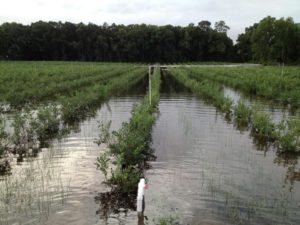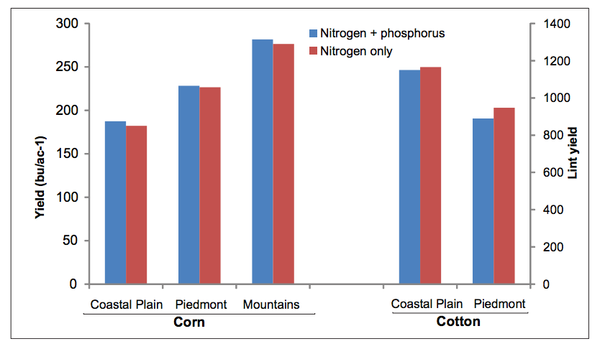2018 Tobacco Day Agenda - December 6th, 2018
December 6th, 2018 Meeting Address: N.C. Cooperative Extension, Johnston County Center, 2736 NC-210, Smithfield, NC 27577 8:00 a.m. – Coffee and Donuts 8:30 …



El inglés es el idioma de control de esta página. En la medida en que haya algún conflicto entre la traducción al inglés y la traducción, el inglés prevalece.
Al hacer clic en el enlace de traducción se activa un servicio de traducción gratuito para convertir la página al español. Al igual que con cualquier traducción por Internet, la conversión no es sensible al contexto y puede que no traduzca el texto en su significado original. NC State Extension no garantiza la exactitud del texto traducido. Por favor, tenga en cuenta que algunas aplicaciones y/o servicios pueden no funcionar como se espera cuando se traducen.
Inglês é o idioma de controle desta página. Na medida que haja algum conflito entre o texto original em Inglês e a tradução, o Inglês prevalece.
Ao clicar no link de tradução, um serviço gratuito de tradução será ativado para converter a página para o Português. Como em qualquer tradução pela internet, a conversão não é sensivel ao contexto e pode não ocorrer a tradução para o significado orginal. O serviço de Extensão da Carolina do Norte (NC State Extension) não garante a exatidão do texto traduzido. Por favor, observe que algumas funções ou serviços podem não funcionar como esperado após a tradução.
English is the controlling language of this page. To the extent there is any conflict between the English text and the translation, English controls.
Clicking on the translation link activates a free translation service to convert the page to Spanish. As with any Internet translation, the conversion is not context-sensitive and may not translate the text to its original meaning. NC State Extension does not guarantee the accuracy of the translated text. Please note that some applications and/or services may not function as expected when translated.
Collapse ▲December 6th, 2018 Meeting Address: N.C. Cooperative Extension, Johnston County Center, 2736 NC-210, Smithfield, NC 27577 8:00 a.m. – Coffee and Donuts 8:30 …

The Southeastern Hay Contest is the premiere forage quality contest in the Southeast USA, with entries coming from hundreds …

N.C. Cooperative Extension Conference 2018 Concurrent Session: Pasture Management: Weeds, Fertilization, and Grazing Management Impacts on Pasture Productivity In addition to adequate …

Meloidogyne enterolobii Internal Quarantine from NCDA On Friday, October 5, 2018, the N.C. Department of Agriculture and Consumer Services released a press …
Many of the soybeans in North Carolina are past the critical growth stages for impact by soybean rust, but …

Extreme weather events, such as hurricanes, can prove detrimental to flue-cured tobacco yield and quality. Specific to hurricanes, both …
Hurricane Florence has brought damaging rains, winds, and flooding to North Carolina with, in some areas, tobacco still being on the stalk. Continuing …

The Food and Drug Administration (FDA) has provided guidance for situations under which farms may be affected by flooding …

Hurricane Florence is dominating news coverage this week and for good reason: it is predicted to be the strongest …
Below are some links to information concerning power loss during curing and selecting generator capacity. Hopefully this will not be …

Environmental conditions this growing season have been conducive for several pathogens in flue-cured tobacco. Frogeye leaf spot (Cercospora nicotianae) has …

Areolate mildew (Ramularia areola syn. Ramularia gossypii) has been confirmed on samples collected from Halifax County, North Carolina. This …
Recently, cotton producers have been concerned with areolate mildew (Ramularia areola syn. Ramularia gossypii) in North Carolina cotton. This …

Soybeans submitted through the Plant Disease and Insect Clinic have been confirmed to have the causal agent of Sudden …

On July 10, 2018, North Carolina Cooperative Extension Agriculture Agents attended an all-day Industrial Hemp Agent Short Course. The …

Extension Agents Becky Spearman (Bladen County), Taylor Chavis (Robeson County), Liz Lahti (Cumberland County), and Randy Wood (Scotland County) recently presented at the National Association …

We’re pleased to announce that the 2018 NC State University Tobacco Tour has been scheduled and that registration is …

This is the eighteenth, and final, thrips flight and TSWV risk assessment report. Read about why we are posting these reports and more …

This is the seventeenth thrips flight and TSWV risk assessment report. Read about why we are posting these reports and more in …

This is the sixteenth thrips flight and TSWV risk assessment report. Read about why we are posting these reports and more in …

This factsheet for farmers describes concepts, terminology, and guidelines concerning soil sampling. Proper testing allows …

Nitrogen fertilizer products are being developed and marketed as having the potential to increase yields and …

Phosphorus (P) is the second most important nutrient in crop production but is often found …

This factsheet describes the symptoms of a shoot inhibitor herbicide injury.

This factsheet describes the symptoms of a metribuzin herbicide injury.

This factsheet describes the symptoms of a dichlobenil herbicide injury.

This factsheet describes the symptoms of a protoporphyrinogen oxidase inhibitor herbicide injury.
This factsheet summarizes the symptoms and management of stubby-root nematodes in soybean in North Carolina.